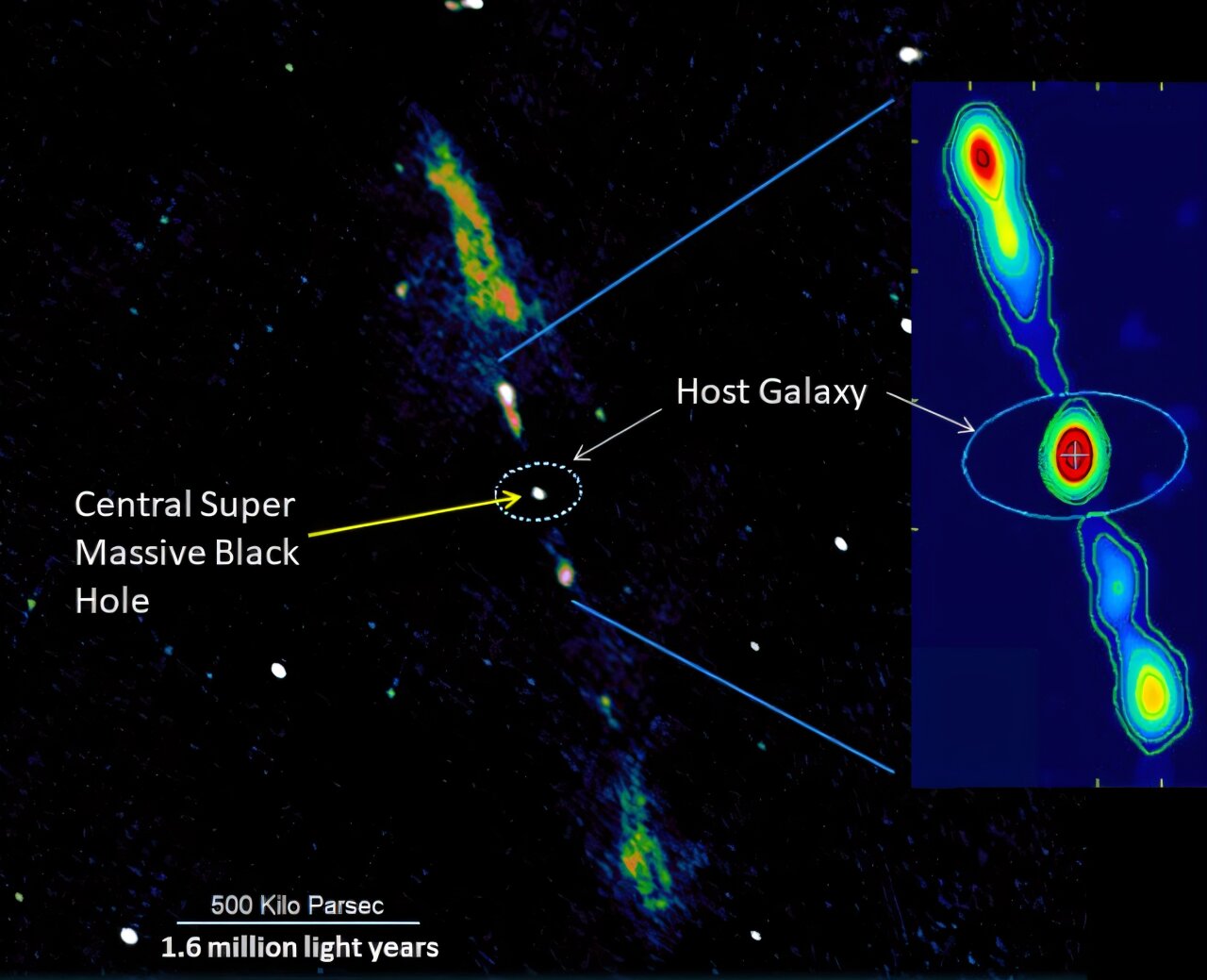Discovery: our galaxy's central black hole could wipe out life on Earth 💥
Published by Adrien,
Source: Monthly Notices of the Royal Astronomical Society
Other Languages: FR, DE, ES, PT
Source: Monthly Notices of the Royal Astronomical Society
Other Languages: FR, DE, ES, PT
Follow us on Google News (click on ☆)
This galaxy, named 2MASX J23453268−0449256, hosts a supermassive black hole powering jets extending over 6 million light-years. Contrary to expectations, such energetic phenomena are usually observed in elliptical galaxies, not spirals. This observation challenges galactic evolution models.

The giant radio jets of spiral galaxy 2MASX J23453268−0449256, captured by the Giant Meterwave Radio Telescope.
Credit: Bagchi et Ray et al/Giant Metrewave Radio Telescope
The international team, led by Professor Joydeep Bagchi from CHRIST University in Bangalore, used multiple telescopes for this study. Their findings, published in the Monthly Notices of the Royal Astronomical Society, suggest our Milky Way could one day face a similar fate.
The presence of these jets could have dramatic consequences for surrounding planetary systems. The emitted radiation could disrupt planetary atmospheres and threaten life. This discovery opens new perspectives on black holes' role in galactic evolution.
Contrary to predictions, the studied galaxy maintains a well-defined spiral structure despite its central black hole's intense activity. This rare phenomenon raises questions about the mechanisms allowing some galaxies to withstand such forces.
The Milky Way, with its central black hole Sagittarius A*, might one day emit similar jets. Though unpredictable, its potential implications for life on Earth are significant. Scientists continue studying these processes to better understand our galactic future.
Finally, this exceptional galaxy also provides valuable clues about dark matter. Its composition suggests an interaction between dark matter, black holes, and galactic structure, enriching our understanding of the universe.
How do black hole radio jets influence galaxies?
Radio jets emitted by supermassive black holes are high-energy particle streams spanning millions of light-years. These jets can heat intergalactic gas, preventing new star formation.
The energy released by these jets can also sculpt space around the galaxy, creating cavities in the intergalactic medium. This process influences matter distribution and neighboring galaxies' dynamics.
In some cases, jets may even expel gas needed for star formation out of the galaxy, limiting its future growth. This shows black holes' profound impact on galactic evolution.
What is dark matter's role in galaxy stability?
Dark matter, invisible and detectable only through gravitational effects, constitutes much of galaxies' mass. It forms a halo surrounding galaxies, influencing their rotation and structure.
In galaxy 2MASX J23453268−0449256, dark matter is ten times more abundant than in the Milky Way. This abundance contributes to the stability of its fast-rotating disk, despite its central black hole's intense activity.
Dark matter thus plays a key role in maintaining galaxies' integrity, even under extreme forces. Its study is essential for understanding cosmic structures' formation and evolution.